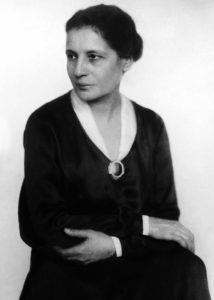Doug Dillon's Blog, page 2
July 29, 2019
Georgia Indian Removal Memorial Project
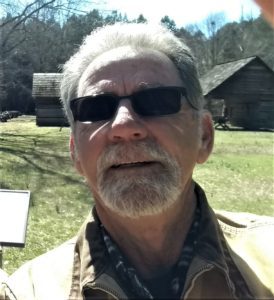
Steve Stone’s selfie
Near the small town of Jasper, Georgia, 50 miles or so north of Atlanta, a 66-year-old self-taught sculptor is carving a huge marble slab in the shed behind his home. He’s doing this as a voluntary community historical project. Measuring 8 feet long, 5 ½ feet wide and 8 inches thick, this 5,000 + lb. rock is Steve Stone’s heartfelt creation to honor the Cherokee people who were forced to leave his state during the 1838 Georgia Indian Removal.
Note: The above drawing is Steve’s concept for how the Georgia Indian Removal Memorial should look when it is completed. It shows soldiers evicting a Cherokee family from their home. (Click on the picture to see it fully)

Georgia Indian Removal Memorial in progress.
Although focusing on the Cherokee, Steve’s Georgia Indian Removal Memorial will also be a tribute to all the Native Americans who were physically extracted from their homes in the 1830s and who traveled the horrific Trail of Tears where thousands of them died. Essentially, this man’s tremendous effort is an attempt to educate people about the removal, a protest of an historic wrong and a fervent cry for inclusion over exclusion in the United States of America.

Mt. Oglethorpe Foundation’s project promotion
Click here for a Trail of Tears map.
A quiet, unassuming and far from wealthy man, Steve had to find help in order to make his Georgia Indian Removal Memorial a reality. And to do that he first convinced the Georgia Mable/Polycor Company to contribute a marble slab. Next, he approached the local Mt. Oglethorpe Foundation for further support. The result? A partnership with the foundation. They have already provided the expensive tools Steve needs to do the carving and they have guaranteed a beautiful location close to his hometown for placement of the memorial.

Close-up of a partially carved memorial section
Steve says that he is truly driven to get his carving completed and installed at Eagle’s Rest Park on Mt.Oglethorpe as soon as possible.
For him, this project is a deeply spiritual experience, one he does not completely understand but feels compelled to fully translate into stone as the Georgia Indian Removal Memorial.
Click here and then scroll down to The Trail of Tears Memorial Campaign to help Steve and the Mt. Oglethorpe Foundation make the Georgia Indian Removal Memorial a reality.
Maybe it’s his distant Cherokee heritage that spurs Steve’s relentless sense of purpose with this project. Or then again, maybe it’s his thankfulness for having survived a medical death sentence and/or his gratitude for his solid and ongoing recovery from chemical dependency.
Whatever the reason or reasons, when Steve is asked about his drive to complete this project, he simply says this:
“All I know is that when I’m cutting into that rock, it is as if an unseen hand is guiding me. I just really feel like this is what I was meant to do in my life.”
Steve will tell you, though, that there is quite a pre-history to his Georgia Indian Removal Memorial dating back to 1994. In those days, he, his wife and three young sons lived near the little town of Waterloo, Alabama just south of the border with the state of Tennessee.

Steve working on his memorial drawing
Back then, he had never heard of the Trail of Tears or the removal of Native Americans from the eastern United States in the 1830s. But that was about to change.
In the years 1994 and 1995, Steve saw the town of Waterloo flooded with out-of-towners, something that had never happened before.

The Trail of Tears Commemorative Motorcycle Ride
Those were the first two years of the Trail of Tears Commemorative Motorcycle Ride. From 100 riders in ’94, that event has continued until today, at times topping 150,000 riders. 150,000! A portion of their very laudable purpose was and is as follows:
“This event was started to bring awareness about this dark chapter in America’s history and to educate the public so this atrocity would never be repeated in America again.”
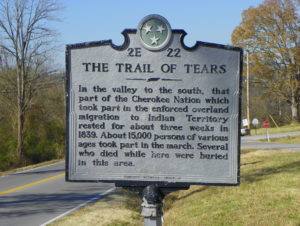
Trail of Tears not forgotten
The route for The Trail of Tears Commemorative Motorcycle Ride follows, as closely as possible, the 1838 overland removal path of one large group of Cherokee people out of many. It begins at Chattanooga, Tennessee and runs for 200+ miles and ends at Waterloo, Alabama. It was at Waterloo, where the Cherokee were then herded onto boats like cattle for the next leg of their journey onward towards their destination upriver to Arkansas.
That event started Steve Stone on his path to understanding how the Cherokee people and other Native American tribes of the eastern United States were treated back in the early days of the republic. Horrified and disgusted the more he heard about those events from the bikers who visited his town, Steve resolved to learn more, and that he did, by reading all he could on the subject.
Unfortunately, of fortunately, depending upon how you might view it, Steve’s studies were interrupted when he broke the heel of his right foot. That laid him up with his leg in a cast, putting his profitable career as a diver for mussels in the Tennessee River on hold.

The Tennessee River, source of Steve’s mussel shells.
But, then a rapid-fire string of events stirred Steve’s interest in Native Americans and the Trail of Tears beyond anything he could have ever imagined, eventually leading to his Georgia Indian Removal Memorial so many years later.

Slate like those found by Steve’s sons
It all began when his young sons brought him large pieces of slate they had found in the creek near their home. Being laid up as he was, and not having much to do, Steve whipped out his pocket-knife and began etching pictures of Native Americans and Native American themes.
The results were beautiful and at the same time, astounding, because he had never been taught how to draw or carve.
And while carving those Native American images on slate, Steve’s thoughts increasingly centered on the Trail of Tears. That thinking process soon caused him to draw his first picture of that appalling event in 1838 and write a poem titled, “Lost Lake Cherokee.”
That poem is a fictional story where a Cherokee man members his grandfather’s account of surviving the Trail of Tears. And while writing his poem, Steve felt a deep and inexplicable connection to the Cherokee people that sent chills running through his body. “It was truly amazing night,” he recalls.
Click here for a special story about Steve and the Burial Ground Incident.
Once it was completed, Steve dedicated his poem to Principal Chief John Ross who led multiple Cherokee groups west during the Removal. He also combined that text with his drawing, designing a unique pictorial story. And more recently, Steve used his own voice to create a haunting audio recording of the poem on YouTube with drumming from the band, Wayra in the background.
To read the text of Steve’s Lost Lake Cherokee poem, click here.
See below to hear Steve reciting his poem. Note: the Wayra band has given Steve permission to publish their drumming contribution to his recorded work.

Tennessee River mussel shells
Soon after finishing his slate art and poem, Steve happened to look at the interior of an old Tennessee River mussel shell he had on hand. The closer he concentrated on that mother-of-pearl, the more he saw what looked like a drop of water, or even a teardrop.
The teardrop concept suddenly merged in his mind with the Trail of Tears. And that thought process led him to create sets of earrings and some necklaces from multiple mussel shells. He named his jewelry creations, “Cherokee Teardrops.
Right on the heels of those artistic achievements, the Third Annual Trail of Tears Commemorative Motorcycle Ride (1996) ended with a big festival in Waterloo as it had in the two previous two years.
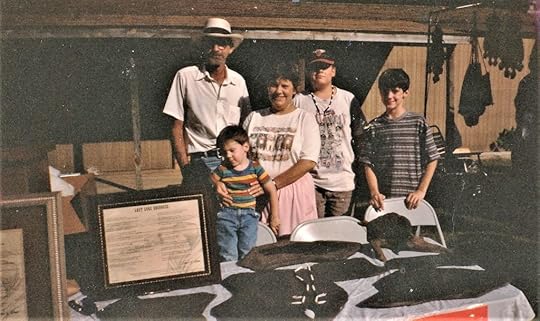
Steve and his family at the 1996 Trail of Tears Commemorative Motorcycle Ride Festival.
Wanting to share his Native American related art, and his understandings about the Trail of Tears history, Steve signed up for a booth at the big event. There he sold his slate art, Cherokee Teardrops and his combined poem/drawing. Actually, he gave more away than he sold, making very little money, but he felt good about contributing to the the goals of the motorcycle ride and the festival.
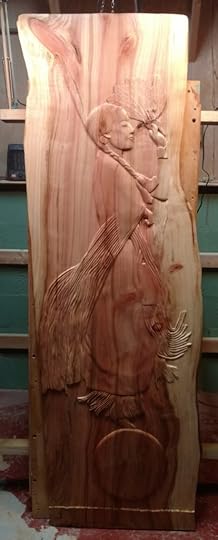
Once the Motorcycle Ride ended, Steve began experimenting with carving in wood and marble, and before long, local media folks and the University of North Alabama got wind of his efforts. Eventually, his stone carvings were put on display, and he was giving lots of interviews.
And for quite a while there was talk of, and even some initial planning for, Steve to create marble Trail of Tears memorial in Waterloo.
But somehow those plans fell through and within a short time, Steve was diagnosed with Hepatitis C. Unfortunately, his body wouldn’t tolerate the medication available that should have been able to cure his illness.
The doctors gave him 10 years to live. On top of that, alcohol and drug addiction were rapidly tearing his life apart
Eight years into that death sentence, and deep chemical dependency, Steve decided to move to northern Georgia where one of his sons lived. There, he decided he would at least be near family and he could get his wife set up in a house before he died.
But, incredibly, new medication came on the market that cured his Hep C. And eventually Steve entered a 12-step program that put him on his present road to recovery that lasted almost 6 years. He now had acquired an unexpected and truly wonderful lease on life.
What didn’t strike Steve initially when he first moved to northern Georgia was one of those strange Native American related coincidences that had been popping up in his life ever since 1996.
Where Steve and his wife had moved to in Georgia is near Chattanooga, Tennessee, the same place where the Cherokee began their overland journey to Waterloo.
In traveling to his new home, Steve had generally paralleled the 200+ mile 1838 Cherokee route but in reverse: Waterloo to Chattanooga.
On top of that discovery, Steve’s new home turned out to be located in what once was the Heart of Cherokee territory, before the Removal.
It took a while, but Steve Stone eventually realized he had to use his artistic talents to do what he had not been able to accomplish in Waterloo, Alabama.

Two stones
So began the man’s quest that will soon establish the Georgia Indian Removal Memorial. The initial dedication date for the carving was projected as sometime in November of 2019. But that all depends upon exactly when Steve completes his work. This article will be updated when the date for the ceremony is established and after it actually happens.
Information sources: Trail of Tears + other Indian Removal related websites/topics.
About north Georgia – Trail of Tears
Cherokee Historical Association
Cherokee Patriots’: Planning The Trail Of Tears (NPR)
Eastern Band of Cherokee Indians (PBS video 6 min.)

Moving the slab
Georgia Trail of Tears Association
How the Brutal Trail of Tears Got Its Name (Smithsonian video 2:44)
National Park Service: Trail of Tears
National Historic Trail Museum of the Cherokee Indian
National Trail of Tears Association
Partnership for the Nation Trails System: Trail of Tears
Trail of Tears (History.com)
The post Georgia Indian Removal Memorial Project appeared first on Doug Dillon.
April 23, 2019
Five Steps to Freedom
![Five Steps to Freedom by [Ross, Diane]](https://i.gr-assets.com/images/S/compressed.photo.goodreads.com/hostedimages/1556190153i/27411976.jpg) In Five Steps to Freedom, Hypnotist, meditation teacher, NLP instructor and counselor, Diane Ross, has created another book of immense value.
In Five Steps to Freedom, Hypnotist, meditation teacher, NLP instructor and counselor, Diane Ross, has created another book of immense value.
Using fascinating real-life stories as illustrations, Diane artfully explains how to bring more balance, peace, joy and love into their lives. In these steps to freedom, she points towards fully connecting with All That Is by releasing the mindsets of separateness, previous mental programming and negativity.
In her kind yet direct way, Diane quickly gets to the heart of the matter by describing how, much to their detriment, people often unwittingly engage in addictive and default thinking. Ultimate freedom, she asserts is to totally understand the power of thought and then effectively channeling it in the right direction. And to help people implement her steps to freedom in their everyday lives, she skillfully guides them in utilizing the realms of mindfulness, acceptance, forgiveness, unconditional love and surrender.
What Diane offers here is a wonderful blending of key concepts and directions that, if followed, will, without doubt, bring tremendous rewards to whomever puts out the effort by actually taking these wonderful steps to freedom.
Click here to see the book on Amazon.com
Click here to see Diane’s previous book on Amazon.com, titled: Meditations for Miracles
The post Five Steps to Freedom appeared first on Doug Dillon.
April 17, 2019
Notre Dame Fire and Destruction
By now, everyone in the world who has a television, computer or cell phone has seen pictures of the Notre Dame fire. This tragic loss is not only French or that of the Catholic Church. It is a body blow to the cultural and spiritual history of all humankind.
I visited that beautiful, ancient cathedral with my parents when I was just 7. The year was either 1950 or 1951. My father was part of the post-World War II U.S. occupation force in Germany and my folks wanted to expose me to as much of Europe’s cultural and natural heritage as possible.
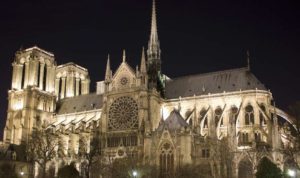
Notre Dame at night
The cathedral’s 900-year history and its endurance under severe adverse conditions, such as surviving France’s control by Adolf Hitler, didn’t impress me much, but being inside that place certainly did. I was awestruck by its immensity, construction, beauty, statuary, and, at that age, mostly by those gorgeous stained-glass windows. Never in all my life though, did I ever think I would see a Notre Dame fire of such immensity.
This incredible loss, thankfully not total, is one that should touch all of us. And although some very rich people have already contributed great sums of money for reconstruction, it is important for those of us with less resources to become part of that process. We the people of the earth have a responsibility to not only restore that building to its former grandeur but to make it even better than it was for future generations.
And in that light, I urge you to reverse the Notre Dame fire’s destruction by contributing to its rebuilding, if you have not already done so. Here is a link that you might find useful in deciding where to send what you can no matter how small an amount or when you read this article. This project is going to be going on for a very long time and will need tremendous support.
Contribution options from NBC News
And below, you will find some other links that you might find of interest in thinking about the massive Notre Dame fire:
NBC News video of the fire (3 min.)
From above and within, how fire hit Notre Dame — the heart of Paris
A Walking Tour of Notre Dame before the fire (9 min. video)
The history of Notre Dame cathedral in Paris (Catholic News Agency)
This is what makes Notre Dame cathedral so iconic (CNN)
Notre-Dame: A history of Paris’s beloved cathedral (BBC)
The post Notre Dame Fire and Destruction appeared first on Doug Dillon.
March 21, 2019
Dr. Bernard Beitman and Doug Dillon Talk Synchronicity
Bernie Beitman and I had a great, hour-long radio chat about synchronicity and coincidences today, March 21, 2019. It began with a discussion about my book, Carl Jung, Hauntings and Paranormal Coincidences, then jumped to a review of a book I co-authored with my wife Barbara, titled, An Explosion of Being: An American Family’s Journey into the Psychic, and even touched on my paranormal/historical young adult series known as the St. Augustine Trilogy.
This event was recorded as a podcast on Dr. Beitman’s Connecting with Coincidences radio show through the ‘X’ Zone Broadcast Network. Listen to our discussion via the following link:
Dr. Beitman’s synchronicity broadcast of his interview with Doug Dillon
Dr. Beitman is the foremost expert in the world on synchronicity and coincidences, the first psychiatrist since Carl Jung to systematize such events. He developed the first valid scale to measure coincidence sensitivity and has written several coincidence articles for Psychiatric Annals. The author or editor of 16 professional books, he is a visiting professor at the University of Virginia, attended Yale Medical School and completed a psychiatric residency at Stanford.
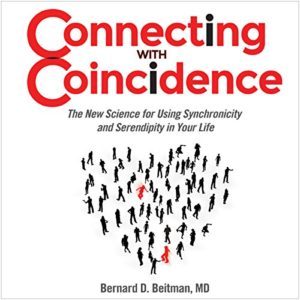 Click here for Dr. Beitman’s Website
Click here for Dr. Beitman’s Website
Click here for Dr. Beitman’s podcasts
Click here for Dr. Beitman’s book on Amazon.com
The post Dr. Bernard Beitman and Doug Dillon Talk Synchronicity appeared first on Doug Dillon.
March 20, 2019
X-Zone Synchronicity Podcast – Paranormal Stakeout
On January 11, 2017, Larry Lawson, veteran police detective, and paranormal researcher, interviewed me on his podcast, Paranormal Stakeout. This fun and interesting chat lasted for an hour on the X-Zone Broadcast Network. Our topic: Synchronicity and Coincidences. Listen to that conversation below on YouTube but I suggest you start at around 2 min. & 45 sec. into the program to avoid 2 repeating advertisements.
https://www.youtube.com/watch?v=q9PKSU3fooY&t=374s
For other paranormal interviews, check out Larry’s list if podcast below.
https://www.listennotes.com/podcasts/paranormal-stakeout-C516XQ-LAJu/
The post X-Zone Synchronicity Podcast – Paranormal Stakeout appeared first on Doug Dillon.
October 11, 2018
Hiroshima Nagasaki Viewpoints: Atomic Bombing Decision
Shared in this article are Hiroshima Nagasaki viewpoints expressed by historical leaders regarding the horrific atomic bombings at the end of World War II. These outlooks, many of them from high -ranking military and government officials, show a marked contrast to the Truman rationale for taking such drastic action against Japan.

Mushroom cloud over Hiroshima
These quotations of Hiroshima Nagasaki viewpoints are offered without comment. The words bluntly, and sometimes eloquently, speak for themselves. And although this article is the last of a 3-part series on the decision to drop atomic weapons on crowded population centers, the statements collected here speak more loudly than all the evidence questioning Truman’s decision offered in the two previous presentations. However, listed below are active links to those other articles should you wish to read them:
Article # 1: Truman’s Decision to Drop the Atomic Bomb“ (Examination of the issue and article series rationale)
Article # 2: “Atomic Bombings of Hiroshima and Nagasaki“ (Arguements agianst the Truman decision)
Each of these Hiroshima Nagasaki viewpoints has a brief description of the individual’s notoriety, but the person’s name also serves as an active link, permitting further investigation.
NOTE: THe photo at the beginning of this article shows a child’s tricycle that barely survived the bombing of Hiroshima. Its sits today in the Peace Museum located in that city. If you care to know the background story of this haunting object, click here to read a children’s book with that information, perhaps one of the most important Hiroshima Nagasaki viewpoints.
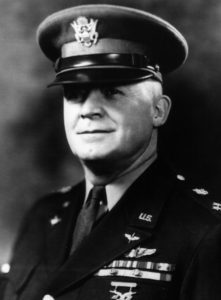
Henry Arnold
General Henry “Hap” Arnold (1886-1950)
Commander of the U.S. Army Air Forces during WWII.
“The Japanese position was hopeless even before the first atomic bomb fell, because the Japanese had lost control of their own air.”
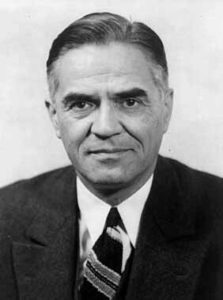
Ralph Bard
Ralph Bard (1884-1975)
Under Sec. of the Navy during WWII.
“…it definitely seemed to me that the Japanese were becoming weaker and weaker. They were surrounded by the Navy. They couldn’t get any imports and they couldn’t export anything. Naturally, as time went on and the war developed in our favor it was quite logical to hope and expect that with the proper kind of a warning the Japanese would then be in a position to make peace, which would have made it unnecessary for us to drop the bomb and have had to bring Russia in…”.
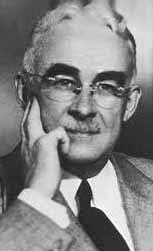
Samuel Cavert
Samuel McCrea Cavert (1888-1976)
Near the end of WWII, he was General Secretary of the Federal Council of Churches, later known as the National Council of Churches. This is the telegram he sent to President Truman on August 9, 1945, right after the atomic bombing of Nagasaki.
“Many Christians deeply disturbed over use of atomic bombs against Japanese cities because of their necessarily indiscriminate destructive efforts and because of their use sets extremely dangerous precedent for the future of mankind . . . Respectfully urge that ample opportunity be given Japan to reconsider ultimatum before any further devastation by atomic bomb is visited upon her people.”
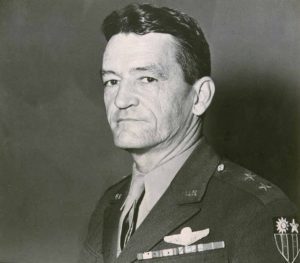
Claire Chennault
General Claire Chennault (1890 – 1958)
A retired U.S. military pilot who, at the invitation of the Chinese government during WWII, went to China to help fight the Japanese and created a volunteer air force called the Flying Tigers. Eventually, the Flying Tigers became part of the U.S. Army Air Corps, commanded by Chennault.
“Russia’s entry into the Japanese war was the decisive factor in speeding its end and would have been so even if no atomic bombs had been dropped. . . .”
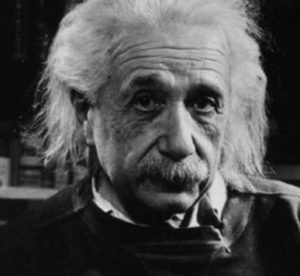
ALbert Eisnstein
Albert Einstein (1878 – 1955)
“I made one great mistake in my life… when I signed the letter to President Roosevelt recommending that atom bombs be made; but there was some justification – the danger that the Germans would make them.”
More:Einstein is also quoted in the New York Times as saying, “. . . he was sure that President Roosevelt would have forbidden the atomic bombing of Hiroshima had he been alive and that it was probably carried out to end the Pacific war before Russia could participate.”
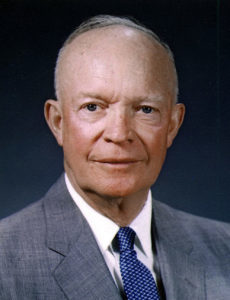
Dwight Eisenhower
Dwight D. Eisenhower (1890-1969)
Eisenhower served as the 34th president from 1953 to 1961. As a five-star general in WWII he was the Supreme Commander of all U.S forces in Europe. In that capacity, it was his responsibility to plan and carry out the invasions of North Africa, France and Germany.
“In 1945 … , Secretary of War Stimson visited my headquarters in Germany, [and] informed me that our government was preparing to drop an atomic bomb on Japan. I was one of those who felt that there were a number of cogent reasons to question the wisdom of such an act…. During his recitation of the relevant facts, I had been conscious of a feeling of depression and so I voiced to him my grave misgivings, first on the basis of my belief that Japan was already defeated and that dropping the bomb was completely unnecessary, and second because I thought that our country should avoid shocking world opinion by the use of a weapon whose employment was, I thought, no longer mandatory as a measure to save American lives. It was my belief that Japan was, at that very moment, seeking some way to surrender with a minimum loss of ‘face.’ The Secretary was deeply perturbed by my attitude, almost angrily refuting the reasons I gave for my quick conclusions.”
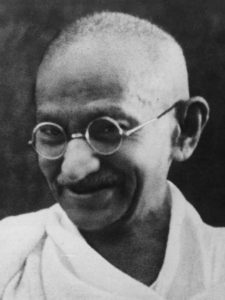
Mahatma Gandhi
Mahatma Gandhi (1869-1948)
“So far as I can see, the atomic bomb has deadened the finest feeling that has sustained mankind for ages.”
More Hiroshima Nagasaki viewpoints
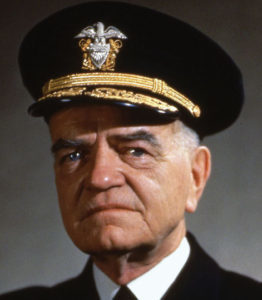
William Halsey
Admiral William F. Halsey, Jr. (1882-1959)
Initially in WWII, he was Commander of South Pacific operations in the war against Japan. Later in the war he was commander of the Third Fleet that destroyed most of the remaining Japanese naval forces.
“The first atomic bomb was an unnecessary experiment. . . . It was a mistake to ever drop it. . . . [the scientists] had this toy and they wanted to try it out, so they dropped it. . . . It killed a lot of Japs, but the Japs had put out a lot of peace feelers through Russia long before.”
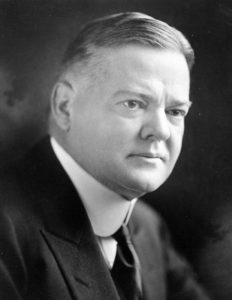
Herbert Hoover
Herbert Hoover (1874-1964)
31st president of the United States from 1929-1933.
“The use of the atomic bomb, with its indiscriminate killing of women and children, revolts my soul.”
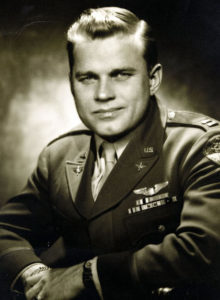
Robert Lewis
Captain Robert Lewis (1917 – 1983)
Co-pilot of the B-29 Enola Gay that dropped the first atomic bomb on Hiroshima.
“As the bomb fell over Hiroshima and exploded, we saw an entire city disappear. I wrote in my log the words, ‘My God, what have we done?’ “
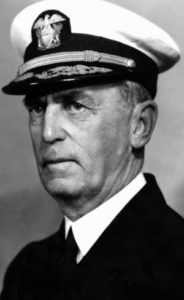
William Leahey
Admiral William D. Leahey (1875-1959)
Chief of Staff to Presidents Franklin Roosevelt and Harry Truman.
“It is my opinion that the use of this barbarous weapon at Hiroshima and Nagasaki was of no material assistance in our war against Japan. The Japanese were already defeated and ready to surrender because of the effective sea blockade and the successful bombing with conventional weapons.
“The lethal possibilities of atomic warfare in the future are frightening. My own feeling was that in being the first to use it, we had adopted an ethical standard common to the barbarians of the Dark Ages. I was not taught to make war in that fashion, and wars cannot be won by destroying women and children.”
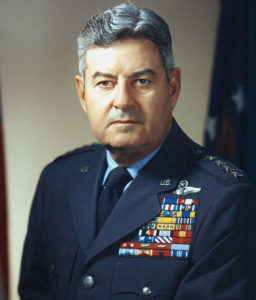
Curtis LeMay
General Curtis LeMay (1906-1990)
LeMay was given command of all air operations against the Japanese in 1944. After WWII he headed the U.S. Strategic Air Command.
Here is part of a press conference he gave:
LeMay: “The war would have been over in two weeks without the Russians entering and without the atomic bomb.”
The Press: “You mean that, sir? Without the Russians and the atomic bomb?”
LeMay: “The atomic bomb had nothing to do with the end of the war at all.”
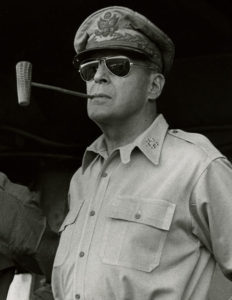
Douglas MacArthur
General Douglas MacArthur (1880-1964)
Commander of the U.S. forces in the Pacific during WWII.
On the 40th Anniversary of the bombing former President Richard M. Nixon reported that:
President Richard Nixon recalled a conversation between himself and MacArthur
“MacArthur once spoke to me very eloquently about it, pacing the floor of his apartment in the Waldorf. He thought it a tragedy that the Bomb was ever exploded. MacArthur believed that the same restrictions ought to apply to atomic weapons as to conventional weapons, that the military objective should always be limited damage to non-combatants. . . . MacArthur, you see, was a soldier. He believed in using force only against military targets, and that is why the nuclear thing turned him off. . . .”
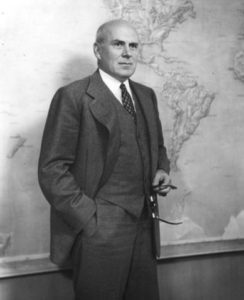
John McCloy
John McCloy (1880-1989)
Assistant Sec. of War during WWII.
“I believe we missed the opportunity of effecting a Japanese surrender, completely satisfactory to us, without the necessity of dropping the bombs.”
Lise Meitner (1878-1968)
Lise Meitner was an Austrian physicist who contributed to the understanding of nuclear fission and discovered its explosive potential. And when asked to become a part of the U.S. Manhattan Project to develop the atomic bomb, she said:
“I will have nothing to do with a bomb.”
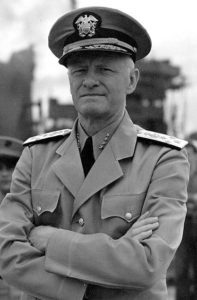
Chester Nimitz
Admiral Chester Nimitz (1885-1996)
Fleet Admiral and Commander-in-Chief of the Pacific Fleet during WWII.
“The Japanese had, in fact, already sued for peace before the atomic age was announced to the world with the destruction of Hiroshima and before the Russian entry into the war.”
“The atomic bomb played no decisive part, from a purely military standpoint, in the defeat of Japan. . . .”
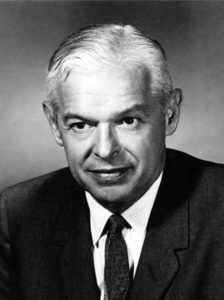
Paul Nitze
Paul Nitze (1907-2004)
Vice Chairman, U.S. Strategic Bombing Survey
“Based on a detailed investigation of all the facts and supported by the testimony of the surviving Japanese leaders involved, it is the Survey’s opinion that certainly prior to 31 December 1945 and in all probability prior to 1 November 1945, Japan would have surrendered even if the atomic bombs had not been dropped, even if Russia had not entered the war, and even if no invasion had been planned or contemplated.”
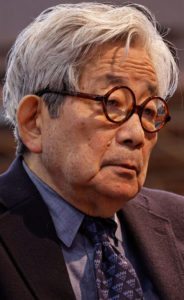
Kensaburo Oe
Kenzaburō Ōe (1935-)
Nobel prize winner in literature. Born in Japan, he was six-years old when WWII started. Born in Japan, he was six-years old when WWII. His father died in the war.
“Hiroshima is like a nakedly exposed wound inflicted on all mankind.”

Carl Spaatz
General Carl “Tooey” Spaatz (1891-1974)
Commanded the Strategic Air Forces in Europe near the end of WWII and in 1947 became Chief of Staff of the newly formed U.Air Force.
“If we were to go ahead with the plans for a conventional invasion with ground and naval forces, I believe the Japanese thought that they could inflict very heavy casualties on us and possibly as a result get better surrender terms. On the other hand, if they knew or were told that no invasion would take place [and] that bombing would continue until the surrender, why I think the surrender would have taken place just about the same time.”
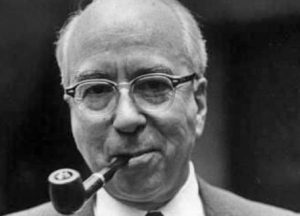
Lewis Strauss
Lewis Strauss (1896-1974)
Special Assistant to the Sec. of the Navy
Strauss recalled a recommendation he gave to Sec. of the Navy James Forrestal before the atomic bombing of Hiroshima:
“I proposed to Secretary Forrestal that the weapon should be demonstrated before it was used. Primarily it was because it was clear to a number of people, myself among them, that the war was very nearly over. The Japanese were nearly ready to capitulate… My proposal to the Secretary was that the weapon should be demonstrated over some area accessible to Japanese observers and where its effects would be dramatic.
“It seemed to me that such a weapon was not necessary to bring the war to a successful conclusion, that once used it would find its way into the armaments of the world…”.
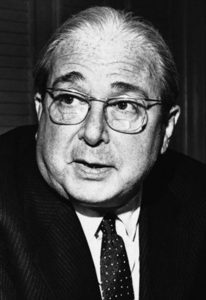
Leo Szilard
Leo Szilard (1898-1964)
Physicist and associate of Albert Einstein, Szilard was the first scientist to understand how an atomic bomb might be made. His work greatly helped in the development of the atomic bomb through the Manhattan project.
“I told Oppenheimer (Director of the Los Alamos Laboratory, who was responsible for the research and design of an atomic bomb) that I thought it would be a very serious mistake to use the bomb against the cities of Japan.”
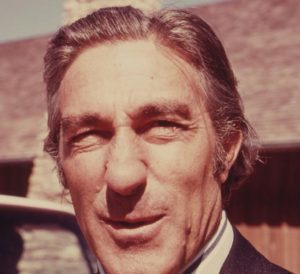
Stewart Udall
Stewart Udall (1920 – 2010)
U.S. Secretary of the Interior from 1961-1969 under presidents Kennedy and Johnson.
“In the first weeks after Hiroshima, extravagant statements by President Truman and other official spokesmen for the U.S. government transformed the inception of the atomic age into the most mythologized event in American history.”
“If the United States would be the first to release this new means of indiscriminate destruction upon mankind, she would sacrifice public support throughout the world, precipitate the race of armaments, and prejudice the possibility of reaching an international agreement on the future control of such weapons.”.
“I submit that it was the wrong decision. It was wrong on strategic grounds. And it was wrong on humanitarian grounds.”

George Wald
George Wald (1906-1997)
1967 Nobel prize winner in physiology or medicine for his work relating to the chemical processes in the eye.
“Dropping those atomic bombs on Hiroshima and Nagasaki was a war crime.”
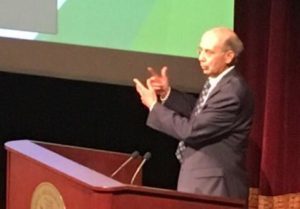
J. Samuel Walker
J. Samuel Walker (1946-)
Former Chief Historian of the U.S. Nuclear Regulatory Commission.
“Careful scholarly treatment of the records and manuscripts opened over the past few years has greatly enhanced our understanding of why Truman administration used atomic weapons against Japan. Experts continue to disagree on some issues, but critical questions have been answered. The consensus among scholars is the that the bomb was not needed to avoid an invasion of Japan. It is clear that alternatives to the bomb existed and that Truman and his advisers knew it.”
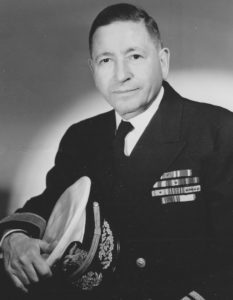
Ellis Zacharias
Ellis Zacharias (1890–1961)
U.S. Deputy Director of the Office of Naval Intelligence during WWII. After the war, he wrote an article in Look magazine titled, “How We Bungled the Japanese Surrender.”
“Just when the Japanese were ready to capitulate, we went ahead and introduced to the world the most devastating weapon it had ever seen and, in effect, gave the go-ahead to Russia to swarm over Eastern Asia.”
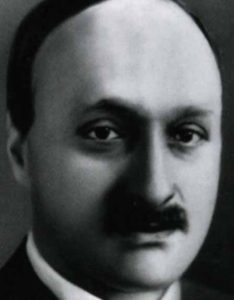
James Franck
The Franck Report (June 11, 1945)
A short time before the bombings of Hiroshima and Nagasaki, a group of important scientists working on the atomic bomb made their feelings known to the president. They called themselves the Committee on Political and Social Problems. The members were, James Franck (Chairman), Donald Hughes, J.J. Nickson, Eugene Robinowitz, Glenn Sparrow, J.C. Searns and Leo Szilard. The following are the main conclusions of their report:
“The use of nuclear bombs for an early, unannounced attack against Japan [is] inadvisable. If the United States would be the first to release this new means of indiscriminate destruction upon mankind, she would sacrifice public support throughout the world, precipitate the race of armaments, and prejudice the possibility of reaching an international agreement on the future control of such weapons.
“Much more favorable conditions for the eventual achievement of such an agreement could be created if nuclear bombs were first revealed to the world by a demonstration in an appropriately selected uninhabited area….
“If the government should decide in favor of an early demonstration of nuclear weapons it will then have the possibility to take into account the public opinion of this country and the other nations before deciding whether these weapons should be used in the war against Japan. In this way, other nations may assume a share of responsibility for such a fateful decision.”
###
A REMINDER; In addition to the above article on Hiroshima Nagasaki viewpoints, please use the links below for the first two parts of this 3-part series.
Article # 1: “Truman’s Decision to Drop the Atomic Bomb“ (An initial examination of the issue and the article series rationale)
Article # 2: “Atomic Bombings of Hiroshima and Nagasaki“ (Counter argumens to the Truman logic)
The post Hiroshima Nagasaki Viewpoints: Atomic Bombing Decision appeared first on Doug Dillon.
Atomic Bombings of Hiroshima and Nagasaki
The decision to carry out the atomic bombings of Hiroshima and Nagasaki in 1945 wasn’t as valid as we have been led to believe. In fact, the case against that decision, and the explanations given to us for its implementation, tells another story entirely.

Mushroom cloud over Hiroshima
Use this link to see a World War II 1945 Timeline
This article, # 2 of a 3-part series on this topic, gives a list of leading questions followed by the answers I have found in my research. In the end, I hope that using such a format will offer the reader a fairly simple and understandable response to the ultimate question of: Was Truman’s atomic bombings of Hiroshima Nagasaki justified? If you care to read the other two sections of the series, click on the article titles listed below:
Article # 1: “Truman’s Decision to Drop the Atomic Bomb” (An initial topic examination and article rationale)
Article # 3: “Hiroshima Nagasaki Viewpoints: Atomic Bombing Decision” (Quotes from important voices. Probably the most critical of all the arguments against using the bomb)
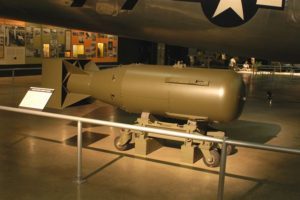
Hirsohima A-bomb: Little Boy
Originally, the creation of U.S. atomic bombs through the Manhattan Project was set up in order to beat the Germans to the punch in the development of their own nuclear weapons. But once Germany was knocked out of the war there was only one target left: Japan. And in that focus arises some interesting possible motivations in the final decision-making process regarding the actual use of such horrific tools of war. You will find those mixed within the following question and answer presentation.
More on the Atomic Bombings of Hiroshima and Nagasaki
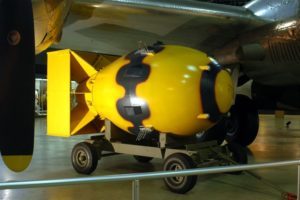
Bomb used on Nagaskai was named Fat Man
What was Truman’s public reasoning for the atomic bombings of Hiroshima and Nagasaki?
The Japanese military and the Japanese people would have fought fanatically if their homeland was invaded. In using the atomic bomb, the United States saved the Japanese people from utter destruction and the lives of 500,000 American military personnel.
What else does history show us most likely impacted Truman’s decision to carry out the atomic bombings of Hiroshima and Nagasaki?
Revenge
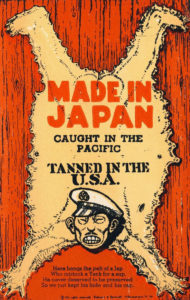
Racist poster
Although Americans hated the Nazis, that feeling went much deeper in relation to Japanese people, including Japanese Americans, because of Pearl Harbor and the Bataan Death March, as well as the torture and murder of U.S. prisoners of war.
Racism (Include survey stats. 85 5 for use. 13% for extermination)
The revenge factor against the Japanese, and Japanese Americans, was undoubtedly augmented by the intensely racist views of many white Americans. This played out in real life during World War II in the addition to the atomic bombings with the prison camp interments in the United States for anyone who had even the smallest portion of Japanese blood in their veins, whether they were citizens or not.
That turned out to be more than 100,000 people. Even more importantly, the documented racism of President Harry Truman might well have been a factor in his decision to drop the atomic bombs on Japan.

The fire bombing of Tokyo
3. The U.S. decision to begin bombing cities late in the war instead of focusing on military, transportation and industrial targets

Fire bombing results: Dresden Germany 1945
The fire-bombings of Dresden in Germany, and in Japan late in the war, crossed a previously established moral barrier that allowed Truman to target Hiroshima and Nagasaki. In fact, the U.S. plan in case there was no Japanese surrender after the initial nuclear attacks was to drop even more atomic bombs on other Japanese cities during the rest of August and into September.
The influence of Secretary of State, James Byrnes
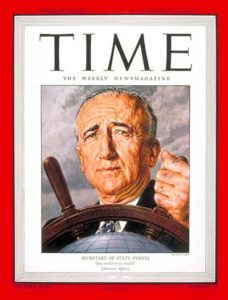
James Byrnes
Byrnes, a former judge and politician from South Carolina, was a very close advisor to President Truman even before he became Secretary of State. Truman trusted and depended on Byrnes, especially regarding international relations, one of the many areas where the President had little knowledge or experience.
It was Byrnes’ hard line on the Japanese and the possible atomic bombings that Truman adopted while disregarding contrary viewpoints from many of his other advisors, including Dwight D. Eisenhower. See also, part 3 of this series, “Hiroshima Nagasaki Viewpoints: Atomic Bombing Decision” (Quotes from important voices. Probably the most critical of all the arguments against using the bomb)
The political momentum of the Manhattan Project (Code name for building the atomic bomb)

Aerial view of the U.S. atomic bomb test in New Mexico
The Manhattan Project cost $2 billion in 1940s dollars over a 4-year period. Today that cost would be close to $28 billion. At the peak of its efforts, The Project directly employed over 120,000 people. But if you include contractors and the total number of people employed over time, the figure grows to over 600,000. And creating a ratio comparing that figure to the U.S. population at the time shows that 1 in every 250 people in the United States were in one way or another employed by the Manhattan Project.
With that much invested in time, effort and dollars, justification for such an expenditure without carrying out final atomic bombings might well have been politically expensive for Truman and a lot of other people.
Containing the Soviet Union
Although the Soviet Union was an ally to the United States during WWII, it was still an aggressive dictatorship with designs on turning the world towards communism. It was clear to Truman that when the war ended, the Soviets would make a move on China, Korea and Japan, as well as Eastern Europe. Therefore, it was always a delicate balance for the United States to get the most out of Russia in fighting the Germans, and then eventually the Japanese, while still coming out of the war able to fully confront the coming Soviet expansion.

Joseph Stalin
7. Preventing an arms race after the war was over
Once Truman told the Soviets about the development of the American atomic bomb, he knew that Stalin would immediately move to create his own nuclear weapons. The president believed this was true whether the U.S. used its bombs on Japan or not. The atomic genie would be out of the bottle and a world arms race could greatly endanger the United States as well as the rest of the planet.
The way to stop that eventuality, so the logic erroneously went, was for the United States to quickly and ruthlessly carry out atomic bombings, thus bullying the Soviets, and others, preventing them from pursuing nuclear weapons.
What information/advice appears to have been ignored by Truman?
Contrary views
Many people who knew about the atomic bomb before Hiroshima and Nagasaki, including scientists working on the Manhattan Project, Truman’s military advisors and members of the British government, advised against its use. Click here for part 3 of this series on viewpoints about the bombings.
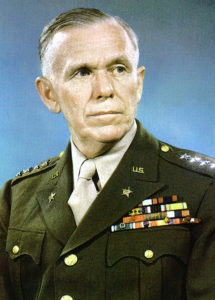
General Marshall
Casualty estimates
The number Truman gave as possible American deaths in an invasion of the Japanese homeland varied over time from 200,000 to 500,000. In his 1955 memoir, he said that General George Marshall, Chief of Staff of the U.S. Army, told him the figure was 250,000.
However, during the war, the Joint War Plans Committee reported to the Army Chief of Staff that the estimated death toll would be 49,000, quite a discrepancy. Not only that, but the U.S. Bombing Survey, after viewing the results of the fire-bombed cities in Japan, reported that the war would be over between November and December of 1945 even without conducting atomic bombings.
Japan’s readiness to end the war
By the summer of 1945, Japan was a nation very close to defeat. Its navy, air force and 67 of its cities had been destroyed, a U.S. naval blockade was strangling its already fragile economy and the island of Okinawa was shaping up to be a nearby base of operations for a full invasion of the Japanese homeland.
The United States had broken the Japanese code making highly sensitive information available to the allies, some of which indicated a desire to end the war. That information correlated with other data supplied by U.S. allies, making a Japanese surrender a very real possibility.
The sticking point, however, was the allied demand that any such surrender had to be “unconditional,” which to the Japanese meant the deposing, and possible execution, of the emperor.
With the emperor’s exalted position in Japanese society, that demand was unacceptable and led to a mindset of fierce resistance by Japan’s entire population in the event of an invasion.

Emperor Hirohito
Even knowing the effect of “unconditional surrender” on the Japanese people and realizing the emperor would be needed to help manage a post-war Japan, President Truman never wavered from that stance. So consequently, once Japan did surrender, the emperor was allowed to maintain his position, although greatly reduced in authority: Something that, if agreed to by Truman previously, might well have prevented the atomic bombings.
The possible full effect of the Soviet Union entering the war
Well before President Truman told Stalin about the U.S. atomic bomb, Stalin had promised to enter the war against Japan 3 months from the date Germany was defeated. On May 7, 1945, Germany surrendered to the allies and on May 9 to the Soviets. Those two dates placed a Russian invasion of Japan somewhere between August 7 and 9.
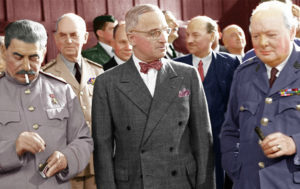
Stalin, Truman and Churchill at the Potsdam Conference
The United States successfully detonated a test atomic bomb within the United States in July of 1945 and notified Stalin of that fact at the Potsdam conference that same month. Up until that point, Truman had cautiously counted on the promised Russian help. Afterward, however, he figured the United States could bring the war in the Pacific to an end without Soviet assistance and allowing Russia to extend its influence into Japan.
On July 26, the United States, China and the United Kingdom issued a final demand for Japan’s “unconditional” surrender. The Japanese leaders refused to abide by that demand. As a result, on August 6, the United States dropped an atomic bomb on Hiroshima, and then again, three days later, on August 9 over Nagasaki. In the middle of those two dates, on August 8, Russia declared war on Japan.
Stalin had followed through with his promise, enough to help induce Japan to end the war but too late for the Soviet Union to benefit from a full invasion. Japan accepted unconditional surrender to the allies on August 14.
Truman’s geopolitical decision deliberately ignored clear evidence that Japan wanted to surrender and probably would have done so quickly after a Russian invasion without the horrific loses incurred through the atomic bombings.
Demonstrating the power of the United States
Suggestions were made, especially by Manhattan Project scientists, to explode a nuclear weapon on a deserted Pacific island with Japanese, Russian and other observers in attendance before dropping any on cities. In that way, so the idea went, the demonstration would clearly show the superiority of the United States and its willingness to wage total war.
What did a post-war assessment of Japan by the U.S. Bombing Survey in 1946 show?
Japan would have surrendered even without the use of the atomic bombs and the Russian invasion.
Why was the bombing of Nagasaki so controversial?
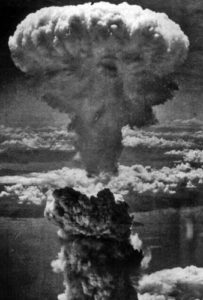
Mushroom cloud over Nagasaki
Nagasaki was bombed on August 9, 1945, 3 days after the destruction of Hiroshima on August 6. The rationale for that event by the U.S. was the absence of an immediate surrender by Japan. 3 days.
The facts on the ground in Japan were that it took time for Japanese leaders to even understand what happened, no less make a reasonable assessment of damages and lives lost. With the utter destruction of Hiroshima, all communications with Tokyo were cut. On top of that, the deep divisions within the Japanese government greatly complicated decision-making.
U.S. decision makers, on the other hand, had to be fully aware of the reasons for a delayed Japanese response. This meant that the bombing of Nagasaki was either done as pure revenge or as another geopolitical statement to the Soviets, letting them know who the top dog in the world now was and how ruthless that top dog could be. Or it could have easily been both those reasons. In any event, 75,000 people paid the ultimate price for such thought processes.
Below is a 48-minute presentation by National Geographic. Includes information on Hiroshima, various aspects of the war in the Pacific and decision-making relating the atomic bombings. [Caution: Very graphic in parts)
What U.S. military action took place after the Nagasaki bombing?
To hurry the surrender process after the bombing of Nagasaki, the U.S. launched a conventional fire-bombing raid of Japanese cities causing 15,000 more deaths.
What was the unintended consequence of dropping atomic bombs on Japan?
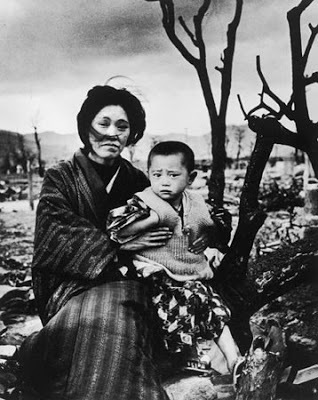
Mother and child atomic bomb survivors
If the United States had agreed to the Japanese condition of preserving the emperor after the war, something they knew they needed to do anyway, Japan would have surrendered before any atomic bombs were dropped or a Russian declaration of war could take place.
The resulting allied and Japanese deaths from not taking this route can be laid squarely at the feet of revenge, racism, ineptitude and politics.
###
Note: As valuable as the previous information in this article is, perhaps the most important of all are the opinions expressed about the atomic bombings by people who were close to the situation. You will find such opinions in the final article of this series titled:
“Hiroshima Nagasaki Viewpoints: Atomic Bombing Decision” (Quotes from important voices. Probably the most critical of all the arguments against using the bomb)
And if you have not yet viewed the first article in this series, you will find it here:
“Truman’s Decision to Drop the Atomic Bomb” (An initial topic examination and article rationale)
The post Atomic Bombings of Hiroshima and Nagasaki appeared first on Doug Dillon.
Truman’s Decision to Drop the Atomic Bombs
President Harry Truman’s decision to drop atomic bombs on Japan at the end of World War II, and the killing of over 220,000 people in the process, was unjustified.
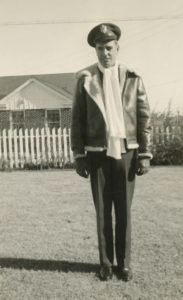
Lieutenant Walt Dillon, 1945
That’s not what I taught in secondary school history classrooms during my 30-year career in public education, however. No, not at all. You see, my dad was a decorated World War II bomber pilot who fought in Europe at the end of that conflict and would have had to also fight in the Pacific if the United States ended up invading the Japanese homeland. So, to me the Japanese surrender because of the atomic bombings always meant that just possibly Dad’s life had been spared by Truman’s decision.
In fact, Dad sadly had to agree with Truman, even though the results of that decision were horrific. That’s how I was raised, and my college education didn’t really contradict my upbringing. Nor did American society as whole. The only wrinkle in my outlook on Truman’s decision, however, came about when I viewed old newsreels showing the utter destruction of Hiroshima and Nagasaki, as well as seeing incredibly gruesome shots of the dead and wounded: Men, women and children.
More on Truman’s Decision to Drop the Atomic Bombs
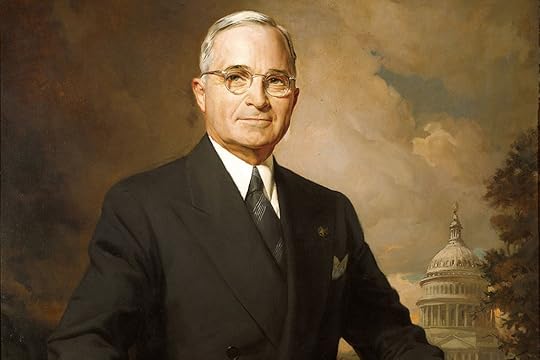
President Harry S. Truman
To watch President Truman’s announcement on the bombing of Hiroshima, click here.
Wait. Before I go on much longer, be aware that this short article is the first in a 3-part series. If you would like to view the other two, please click on the following titles when you are ready:
Article #2: “Atomic Bombings of Hiroshima and Nagasaki“ (Counter arguments to the Truman logic)
Article #3: “Hiroshima Nagasaki Viewpoints: Atomic Bombing Decision” (Quotes from important voices. Probably the most useful of all 3 articles)
And if you would like to see a short fact sheet on the Hiroshima bombing, here is the link: Hiroshima information.
Now back to what I was saying.
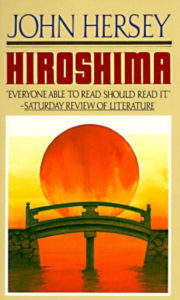
Hersey’s book had great impact on people
What got to me even more than the newsreels, was reading John Hersey’s 1946 Pulitzer prize-winning book, Hiroshima, detailing the ghastly experiences of 6 blast survivors. Yes, it got to me, and still does. But at the time it wasn’t enough to override the logic of the Truman’s decision and what I had been taught.
So as a result, my history lectures as school teacher were mostly in line with Truman’s explanation that the destruction of Hiroshima and Nagasaki were a grim necessity of a very nasty but justified war with Japan. Without those horrific attacks, Truman and I both espoused, the United States would likely have lost 500,000 more of its young men in the final invasion of the Japanese homeland and countless Japanese civilians would have died as well.

U.S. victory in Japan celebration
As a matter of interest, after Japan’s surrender, a survey of public opinion showed that 85% of Americans agreed with Truman’s decision to use the atomic bombs and his reasons for it. In fact, so did most newspapers in the United States.
The war was over, no more Americans had to die, and the Japanese got what was coming to them for Pearl Harbor, the Bataan Death March and the torture and murder of American prisoners of war. However, a disturbing 13% of Americans in that survey also wanted to see all Japanese people exterminated.
In postwar America, Truman and the U.S. government stuck to the necessity for using atomic bombs on Japan. In fact, however, there was a definite disinformation campaign to disparage any other point of view. It has literally taken decades for the real stories behind to bombings to come out.
See what it looks like inside an atomic blast
And in my case, what caused me to seriously question Truman’s decision was the periodic releasing of previously withheld/secret information about the bombings and documentary films that helped fit all that new data together. Finally, I turned to 3 books that convinced me Truman’s decision, as well as the fire bombings of Germany and Japan before Hiroshima and Nagasaki, were definitely unjustified.
If you’re interested in those books, see details about them below. If not, don’t forget that key aspects of my arguments against Truman’s decision are contained in the other 2 articles in this 3-part series as follows:
Article #2: “Atomic Bombings of Hiroshima and Nagasaki” (Counter arguments to the Truman logic)
Article #3: “Hiroshima Nagasaki Viewpoints: Atomic Bombing Decision” (Quotes from important voices. Probably the most critical of all the arguments against using the bomb)
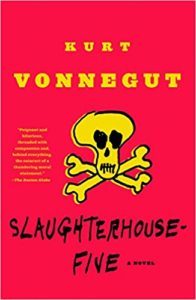
Kurt Vonnegut’s contribution to sanity
Slaughterhouse-FIve: a novel by American writer, Kurt Vonnegut
A wild, weird and quirky ride into the insanity of war, using the true story of the Dresden, Germany fire bombing by American and British planes in 1945 as a focal point. In that event, 35,000 + men, women and children were killed in a prelude to the atomic bombings of Hiroshima and Nagasaki.
Slaughterhouse-Five is considered by some to be one of the best 100 novels of all time.
As an allied prisoner of war, author Kurt Vonnegut somehow survived the bombing of Dresden and lived to write about it.
Personal note: My dad was part of the U.S. Occupation Forces in Germany after World War II. My mother and I joined him there in 1949. And early in the 3 years we lived there, my parents took me to visit Dresden. I was 6-years old and only partially understood what I was seeing. All I can remember now is being with a small crowd of people standing in a rubble cleared street and seeing endless, incomprehensible destruction all around me. But what still sticks most in my mind was the deep quiet that enveloped us only occasionally being broken by the muted voices of the adults.

The vast wasteland of Dresden, Germany
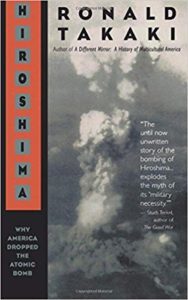
Hiiroshima
Hiroshima: Why America Dropped the Atomic Bomb by Ronald Takaki
Ethic studies professor Ronald Takaki’s consise and very readable documentation of the real reasons the United States bombed Hiroshima and Nagasaki.
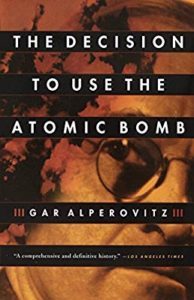
Alperovitz created a definitve study
The Decision to Use the Atomic Bomb by Gar Alperovitz
A comprehensive, and very valuable 800-page + scholarly work.
The post Truman’s Decision to Drop the Atomic Bombs appeared first on Doug Dillon.
September 20, 2018
Old City of St. Augustine Photos
As an author who writes about America’s oldest city, I have now opened my St. Augustine photos to the general public. So whether you are doing research on St. Augustine, or simply planning a visit there, feel free to use the 24 galleries listed below in your planning efforts.

Spanish troops leave the Castillo de San Marcos
Don’t forget that by hovering your cursor over each picture you can read the identification I have attached to it. And below each of the photo gallery links is a More button that will offer you further information that might be of interest.
So enjoy my St. Augustine photos and if you are a book reader, or know one, check out the last item in this article. I’m just about finished writing The St. Augustine Trilogy, a chilling paranormal/historical/time travel series set right in the heart of the old city and that item is a link to those books.
St. Augustine Photos – Locations
Castillo de San Marcos, Part 1 (The old Spanish fort) More
Castillo de San Marcos, Part 2 (The old Spanish fort) More
Cathedral Basilica More
City Hall & the Lightner Museum (Old Alcazar Hotel) More
Constitution Plaza # 1 More
Constitution Plaza # 2 More
Coquina (the King’s building material) More
Flagler College (The old Ponce de Leon Hotel) More
Historic Buildings More
Historic Cemeteries
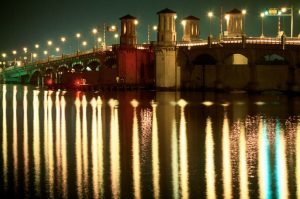
The Bridge of Lions
(Huguenot, Tolomato & National Cemeteries) More (Huguenot) More (Tolomato) More (National Cemetry)
Maria Sanchez Creek/Lake More
Matanzas Bay and River Area More
Augustine Historical Society’s Research Library More
Augustine Lighthouse & Museum More
Augustine’s National Cemetery More
Street Scenes # 1 More
Street Scenes # 2 More
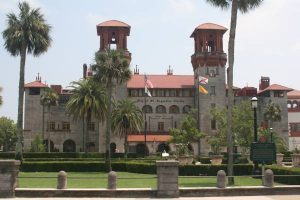
The old Alcazar Hotel
St. Augustine Photos – Events
Blessing of the Fleet More
Bridge of Lions Reopening More
British Night Watch Parade (A reenactment event) More
Castillo de San Marcos, Part 3 (Cannon firing) More
Castillo de San Marcos, Part 4 (18th Century Spanish soldiers mustering) More
Drake’s Raid 1586 (A reenactment event) More
Searle’s Raid 1668 (A reenactment event) More

Trilogy book covers
St. Augustine Fiction by Doug Dillon
The post Old City of St. Augustine Photos appeared first on Doug Dillon.
September 14, 2018
The St. Augustine Monster: A Sea Creature
The St. Augustine Monster was the name given to the remains of a huge, mysterious sea creature discovered on November 30, 1896 by two boys riding their bikes on a north Florida beach.
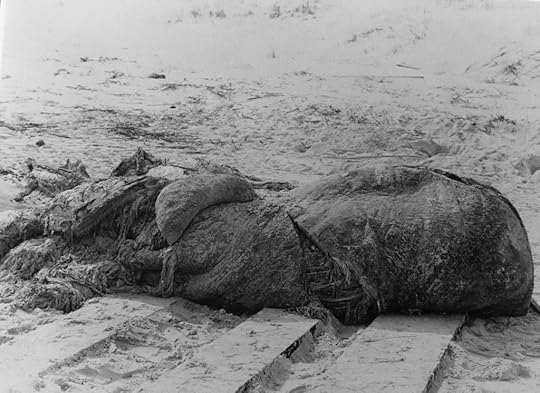
The remains Dr. Webb encountered. Courtesy of the St. Augustine Historical Society.
That discovery led to multiple scientific investigations right up through the 1990s. The results were often contradictory, classifying the remains as those of a giant squid, a giant octopus and even whale blubber. In fact, the final and most definitive analysis uses the word “probably” in giving the creature an ultimate identity – a rather imprecise term for scientists to use.
Such expert analyses of what would soon become known as the St. Augustine Monster began almost immediately after the finding of the creature back in 1896. Why? Because of the involvement of Dr. DeWitt Webb, a prominent local citizen. He was a physician, amateur naturalist and head of the St. Augustine Historical Society and Institute of Science, known now simply as the St. Augustine Historical Society. It was very natural for such information to come to Dr. Webb’s attention.
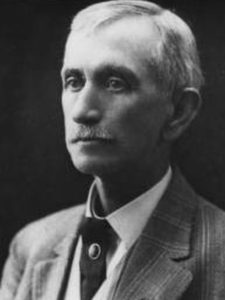
Dr. DeWitt Webb
Investigating the Carcass
The day after he was notified of their discovery by the two boys, December 7, 1896, Dr. Webb went to St. Augustine Beach to see for himself. What he found was a very large, badly decomposed carcass, partly buried in sand. Its surface was pale pink in color that, when viewed in direct sunlight, looked silvery white.
Amazed and excited, Webb quickly went to work digging sand away from the remains, measuring that huge mass, and drawing pictures ofd it. A compressed/abbreviated version of his notes written at the time, including his conclusions, are as follows:
Length: 18 feet
Width: 7 to 10 feet
Estimated weight: 4 to 7 tons
Hide thickness: 3 inches
Indications: There were multiple stumps where arms had probably been attached.
Conclusion: The carcass is that of a giant octopus
Within a short time after that, Webb had sent his notes and drawings to various scientists, including Dr. Addison Verill of Yale University. It was Verill who responded. At first, Verill thought the find might be a giant squid but then upon reflection he decided it had to be, as Dr. Webb concluded, that it was a giant octopus. In fact, Verill publicized his conclusion and even gave the creature a scientific name, Octopus Giganteous.
And based upon the dimensions supplied by Dr. Webb, Verill estimated the arms of the creature had to be 100 feet in length. That meant the diameter must have been around 200 feet, an incredible and almost impossible size to believe possible.
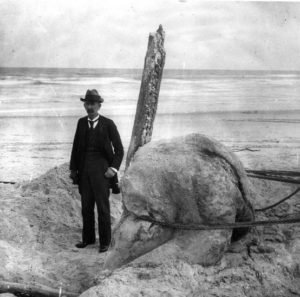
Dr. Webb at the discovery site
Then on December 7, Dr. Webb returned to the carcass with two amateur photographers in order to document the find and also cut tissue samples from the creature. But when he arrived, he found that a Mr. Wilson had dug away a considerable amount of sand around the remains. This exposure showed even more “stumps” and even an arm, measuring 23 feet in length. Soon after that beach visit, Webb sent photos and tissue samples to Dr. Verill.
Shifting Sands
In January of 1897, Webb was horrified to find out that a storm had apparently swept the carcass out to sea. Luckily, he scoured the coastline and found the remains 16 miles south of St. Augustine near Crescent Beach. Determined not to lose his find again, Webb used four horses, six men and numerous wooden planks to move his “octopus” back to St. Augustine Beach and 40 feet above the high tide line.
Soon after that move, the carcass became a temporary tourist attraction and was given the name the St. Augustine Monster. But that notoriety didn’t last long for two reasons:
In March of 1897, another large storm stole the carcass for the last time. It was never seen again.
Upon receipt of Webb’s rather dark and blurry photos, as well as the tissue samples, and after having received a great deal of criticism by other scientists for his initial identification, Dr. Verill changed his analysis. His new conclusion was that the discovery was nothing more than whale skin and blubber. And so that identification remained until the late 20th
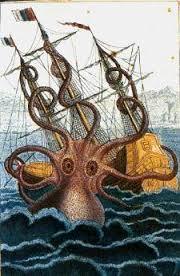
Tales of such giant creatures abound in history
Interest in the St. Augustine Monster was eventually resurrected in 1957 by Mr. Forest Wood, Director of Marine Studios, later called Marineland, just south of St. Augustine Beach. Wood gathered every document he could find about that old carcass and even tracked down the tissue samples Dr. Webb sent out back in the previous century. He found them in the National Museum of Natural History, part of the Smithsonian Institution.
Intent generating a new analysis of the St. Augustine Monster’s remains, Wood sent his information to a wide variety of scientists. His enthusiasm, however, didn’t stir up an immediate response: far from it, actually.
Yet Other Interpretations of the St. Augustine Monster’s Identity
It took until 1971, when Dr. Joseph Genarro, Jr., a naturalist at the University of Florida, looked at Woods collected evidence. His conclusion? Dr. Webb was right. The carcass was indeed an unknown type of octopus. A giant one. Then in 1986, Dr. Roy Mackal of the University of Chicago verified Genarro’s finding.

St. Augustine Beach today
End of the St. Augustine Monster story? Not quite. In 1995 a joint team of investigators from the Universities of Maryland and Indiana, Sidney Pierce, Gerald Smith, Timothy Maugel and Eugenie Clark, found that Dr. Verill’s 19th century conclusion of whale skin and blubber was correct.
In that analysis, however, the 1995 team hedged a bit. They said that the carcass was probably part of a whale. Why probably? Because their studies strongly leaned in that direction and that it could be nothing else. And sadly, the tissue samples Forest Wood found at the Smithsonian have disappeared, leaving any further analysis rather problematic.
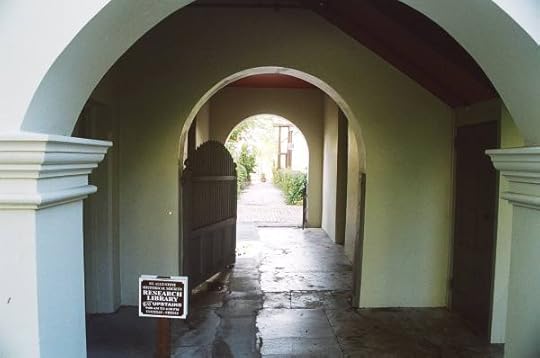
Entrance to the St. Augustine Historical Society’s Research Library
NOTE: This article is a very abbreviated description of the St. Augustine Monster story. For a great deal more information, please refer to the following links.
An Octopus Trilogy (Natural History Magazine)
Historic City Memories: St. Augustine Sea Monster (Historic City News)
Ogre? Octopus? Blobologists Solve An Ancient Mystery (New York Times)
Saint Augustine Monster (Smithsonian Archives)
Scientists say sea-monster legend is all washed up (Baltimore Sun)
The Legendary Giant Octopus Resurfaces (Orlando Sentinel)
The sea monster that never was (New Scientist)

The old Spanish Fort in St. Augustine: The Castillo de San Marcos
Other Unusual Articles About St. August by Doug Dillon
HAUNTED LIGHTHOUSE IN ST. AUGUSTINE, FL
HAUNTED ST. AUGUSTINE, FL – CASTILLO DE SAN MARCOS
SCHOOL RULES IN COLONIAL ST. AUGUSTINE FL
ST. AUGUSTINE, FL: PYRAMIDS IN A NATIONAL CEMETERY
ST. AUGUSTINE HISTORY: A PIRATE’S NEAR-DEATH-EXPERIENCE
WEIRD THING TO SEE NEAR ST. AUGUSTINE, FLORIDA
The post The St. Augustine Monster: A Sea Creature appeared first on Doug Dillon.

